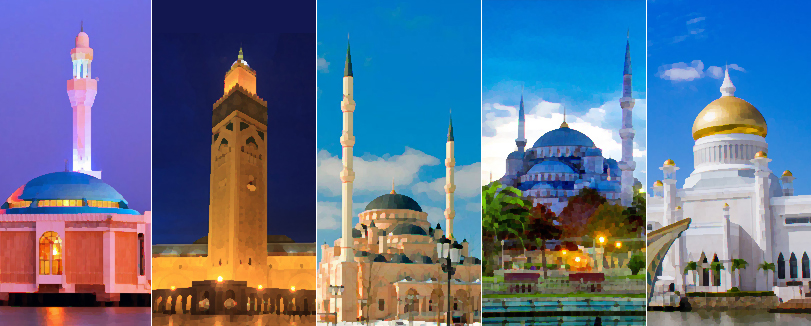Masjid Nabvi:
Masjid Nabvi (Prophet’s Mosque) is the second holiest mosque or site in Islam and it is also one of the largest mosque in the world.
..Masjid-e-Nabvi is located in Madina, Saudi Arabia and always opens even in day and night.
The pilgrims come for performing hajj; also visit the Masjid Nabvi because of its significance. Let’s take the detour back in time to know the Masjid-e-Nabvi history.
More importantly, this mosque is the second largest and most beautiful mosque around the World.
Masjid-E-Nabvi Origination:
In 622 CE, the Prophet Muhammad (S.A.W) migrated to Madina from Mecca, he built the mosque by himself in Rabi-ul-Awwal, 1 Hijri. And the foundation of Masjid e Nabvi was laid by him.
The mosque was originally next to Prophet Muhammad (S.A.W) house. The mosque was open air when it was originally built.
Original Construction And Structure:
The original mosque was built with unbaked bricks and foundation was made of stones. Columns of the mosque were built with the stalk of palm trees. The prophet Muhammad(S.A.W) covered the roof with branches of palm trees.
Moreover, The original dimension of the Masjid-e-Nabvi mosque was 35*30 meters.
There were three doors; one door was in direction of Qiblah into southern wall. But when the direction of Qiblah had been changed, this door was closed and the new door was opened on the northern wall. The other two doors were known as Bab-e-Rehman in western wall and in an eastern wall there was Bab Jibreel.
Extension By Muhammad (P.B.U.H):
After the battle of Khyber, Prophet Muhammad (S.A.W) ordered the Sahaba (companions) to extend the Masjid e Nabvi because more people entered into Islamic circle.
In 7H, the width of the mosque was increased by 20 meters and length by 15 meters. The new dimensions of the mosque become 50*50 meters. The height of the roof was extended from two and a half meters to three and a half meters.
However, Hazrat Usman paid for an additional land of the mosque.
Renovation and Extension in Caliph’s Reign:
First Caliph: Hazrat Abu Bakr (R.A):
In Hazrat Abu Bakr (R.A) reign, some of the tree stems of the columns worn out. So, he replaced these columns with similar trees and covered the roof with palm tree branches.
Second Caliph: Hazrat Omar Farooq (R.A):
As the population of Muslims grew significantly, people requested the caliph to extend the mosque. Hazrat Omar Farooq (R.A) in 17H extended the whole Masjid Nabvi mosque by ten meters to the west, five meters to the south and fifteen meters to the north.
The roof was increased by five and a half meters and a new door was added in western wall known as Bab Salam. The western boundary of a mosque was extended up to seven columns from the podium. So, new dimensions become 70*60 meters.
Third Caliph: Hazrat Usman (R.A):
Hazrat Usman extended the Masjid-e-Nabvi in 29H. The mosque was extended by five meters to the north, five meters to the south and five meters in western direction. That’s why mosque was extended up to eight columns from the podium.
After Hazrat Usman extension no changes were made on the southern side so it is still placed in original position.
There were many extensions made after the Caliph’s reign by Omayyad ruler, Abbasid ruler. There were two fires in the mosque so it was reconstructed twice. Then Sultan Abdul Majeed the Ottoman Empire ruler extended and redesigned the Mosque.
The Saudi Government extended the Masjid Nabvi Mosque two times and added ladies prayer areas as well.
Conclusion:
Today the Masjid-e-Nabvi Mosque is well equipped with toilets, air conditioners, car parking, basement and public service. Its current capacity is 10,00000.

